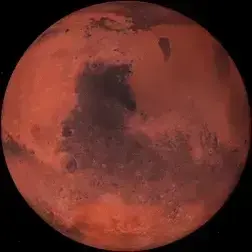- cross-posted to:
- [email protected]
- [email protected]
- cross-posted to:
- [email protected]
- [email protected]
A minor accident had forced me down in the Rio de Oro region, in Spanish Africa. Landing on one of those table-lands of the Sahara which fall away steeply at the sides, I found myself on the flat top of the frustum of a cone, an isolated vestige of a plateau that had crumbled round the edges. In this part of the Sahara such truncated cones are visible from the air every hundred miles or so, their smooth surfaces always at about the same altitude above the desert and their geologic substance always identical. The surface sand is composed of minute and distinct shells; but progressively as you dig along a vertical section, the shells become more fragmentary, tend to cohere, and at the base of the cone form a pure calcareous deposit.
Without question, I was the first human being ever to wander over this . . . this iceberg: its sides were remarkably steep, no Arab could have climbed them, and no European had as yet ventured into this wild region.
I was thrilled by the virginity of a soil which no step of man or beast had sullied. I lingered there, startled by this silence that never had been broken. The first star began to shine, and I said to myself that this pure surface had lain here thousands of years in sight only of the stars.
But suddenly my musings on this white sheet and these shining stars were endowed with a singular significance. I had kicked against a hard, black stone, the size of a man’s fist, a sort of moulded rock of lava incredibly present on the surface of a bed of shells a thousand feet deep. A sheet spread beneath an apple-tree can receive only apples; a sheet spread beneath the stars can receive only star-dust. Never had a stone fallen from the skies made known its origin so unmistakably.
And very naturally, raising my eyes, I said to myself that from the height of this celestial apple-tree there must have dropped other fruits, and that I should find them exactly where they fell, since never from the beginning of time had anything been present to displace them.
Excited by my adventure, I picked up one and then a second and then a third of these stones, finding them at about the rate of one stone to the acre. And here is where my adventure became magical, for in a striking foreshortening of time that embraced thousands of years, I had become the witness of this miserly rain from the stars. The marvel of marvels was that there on the rounded back of the planet, between this magnetic sheet and those stars, a human consciousness was present in which as in a mirror that rain could be reflected.
-Antoine de St. Exupery
Wow, that is such evocative writing!
It’s pure magic
Just so you know, you’ve got me reading Wind, Sand and Stars now. Thanks!
😃
It’s so good
Well that is some spectacular prose, I am truly transported to a place where spirituality and science meet at a single point of grand mystery and realization that I have felt a few times in real life, alone in nature at surprising places and odd hours, but Saint-Exupéry has taken this all one further level up the rung.
To a level that my father actually lived, as an airplane pilot in Baja California back when the peninsula didn’t have a paved road, an isolated, remote place as yet mostly untouched by man.One minor caveat, however:
a sheet spread beneath the stars can receive only star-dust
While I understand such a thoughtful writer was going for a feeling, surely with his talent he could have found a way to include windstorms, all the dust and sands they can sweep horizontally across the lands and over hills. The Rio De Oro region is in northern Morocco, surely it often gets blasted by powerful Saharan winds.
A sheet spread beneath the Moroccan sky most often receives desert-dust.I suspect it receives relatively few big rocks from anywhere else though
cool





